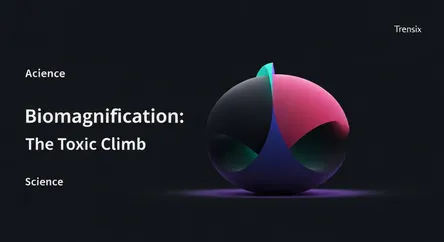Science
Biomagnification: The Toxic Climb

Discover biomagnification, the process where toxins concentrate up the food chain, impacting ecosystems and human health. Learn why it matters.
What is it?
Biomagnification is the process where the concentration of persistent toxic chemicals increases in organisms at successively higher levels in a food chain. Toxins like mercury, DDT, and PCBs are not easily broken down and accumulate in an organism's fatty tissues. When a predator consumes prey, these toxins are transferred and become more concentrated. This continues up the food chain, meaning apex predators can have dangerously high levels of contamination, far exceeding what's found in the environment itself. This differs from bioaccumulation, which is the buildup of toxins within a single organism over its lifetime.
Why is it trending?
Biomagnification is trending due to growing public awareness of pervasive pollutants like microplastics and "forever chemicals" (PFAS). Scientific studies increasingly reveal how these substances infiltrate global food webs, from tiny plankton to large marine mammals. As concerns about environmental health and sustainability grow, biomagnification provides a crucial lens for understanding how industrial and agricultural pollution poses a significant, compounding threat to wildlife and entire ecosystems. It highlights the interconnectedness of all life.
How does it affect people?
As consumers often at the top of food chains, humans are directly impacted. The classic example is mercury accumulating in large predatory fish like tuna and swordfish. Consuming this contaminated seafood can lead to high mercury levels in humans, which is a potent neurotoxin linked to developmental and neurological problems. Similarly, other biomagnified toxins from pesticides or industrial waste can build up in our bodies, potentially causing reproductive harm, immune system issues, and increased cancer risks. Health advisories on fish consumption are a direct response to this threat.